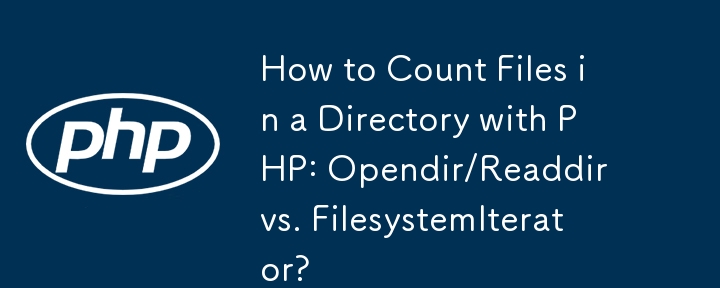Found a total of 10000 related content

Linux Kernel Source Code Surpasses 40 Million Lines
Article Introduction:Linux: The cornerstone of modern computing, from smartphones to supercomputers, can do everything. Over the years, the size and complexity of the Linux kernel has increased significantly. As of January 2025, the Linux kernel source code contains approximately 40 million lines of code! This is one of the greatest achievements in the history of open source, community-driven projects.
This article will discuss the exponential growth of the number of lines in the Linux kernel source code, the reasons and how to check the current number of lines by yourself.
Directory
-Linux kernel history
Count the number of lines of the Linux kernel source code
only count C and header files
Exponential trend of kernel growth
Verify historical Linux kernel lines
Summary
Linux kernel history
Since 1991 Linus Tor
2025-03-05
comment 0
1133

Example of a pagination component in Vue
Article Introduction:To implement reusable Vue paging components, the following key points need to be clarified: 1. Define props including the total number of lines, the number of lines per page and the current page number; 2. Calculate the total number of pages; 3. Dynamically generate the displayed page number array; 4. Process the page number click event and pass it to the parent component; 5. Add styles and interaction details. Receive data through props and set default values, use the computed attribute to calculate the total number of pages, use the method to generate the currently displayed page number array, render buttons in the template and bind click events to trigger the update:current-page event, listen to the event in the parent component to update the current page number, and finally highlight the current page number through CSS and control the button status to improve the user experience.
2025-07-26
comment 0
999

How to Count Files Within a Directory in PHP?
Article Introduction:Counting Files in a Directory in PHPOne common task in programming is determining the number of files in a specific directory. PHP offers several...
2024-11-04
comment 0
1219


Mastering the Split Command in Linux: Effective File Splitting Techniques
Article Introduction:Powerful file segmentation tool in Linux system: detailed explanation of split command
In the Linux world, the split command is a powerful tool for splitting large files into smaller fragments. The split command is especially useful when dealing with large log files and compressed files because it can effectively solve the problem of excessive and difficult to deal with a single file. This article will dig into various options and usage examples of split commands and integrate multiple sources of information to help you get a full grasp of the command.
Splitting files based on line count
The split command can split files into smaller files based on the number of lines. By default, each split file contains 1000 lines. You can use the -l option to customize the number of lines per file.
2025-03-17
comment 0
1172

Python tutorial: Efficiently count the occurrence of subsequences in a list
Article Introduction:This tutorial details how to efficiently find and count the occurrences of a specific subsequence in a Python list. In view of the limitation of only judging existence, the article proposes an iterative method based on the comparison of sliding windows and slices. By traversing the main list, you can accurately match the fragments of the same length as the target subsequence for everything, and accumulate counts, so as to accurately obtain the total number of times the subsequence appears in the main list, providing clear sample code and implementation details.
2025-08-04
comment 0
209


php get number of weeks in a month
Article Introduction:The number of weeks in a certain month can be obtained through PHP calculation. First, determine the day of the week of the month, and then calculate the number of weeks based on the total number of days. The formula is: ceil((total number of days of week-1)/7); if a week starts from Sunday, the calculation logic needs to be adjusted. 1. Use date() to get the number of weeks corresponding to the first day of each month; 2. Use cal_days_in_month() to get the total number of days in the month; 3. Use formulas to calculate the number of weeks. For example, January and October 2023 have 6 weeks, because the first day is Sunday and has 31 days. In actual application, we should clarify the starting date of the week, consider whether the framework provides date categories, and deal with situations across monthly and weekly.
2025-07-06
comment 0
636

How to Count Rows in a MySQL Table Using PHP
Article Introduction:The article provides a detailed guide on counting rows in a MySQL table using PHP. It explains the use of the SQL COUNT(*) function and demonstrates how to integrate this function into PHP code to retrieve the total number of rows in a table, providi
2024-10-21
comment 0
694

how to count files in a directory linux
Article Introduction:To quickly count the number of files in a directory in Linux, 1. Use ls-1|wc-l to count the number of non-hidden files. Adding -A can contain hidden files, but it will miscalculate the directory; 2. Use find.-maxdepth1-typef|wc-l to accurately count ordinary files in the current directory, supporting further filtering or traversing subdirectories; 3. Although du-a|wc-l can roughly count the number of entries, it is not recommended for accurate counting, because it contains directories and is easily affected by permissions. For different scenarios, you can select corresponding commands and parameter combinations according to your needs.
2025-07-22
comment 0
389

how to view the contents of a file in linux
Article Introduction:Viewing file content in Linux can be achieved through multiple commands. The specific methods are as follows: 1. Use the cat command to quickly view the content of small files, but large files will quickly scroll and be difficult to read; 2. Use the less command to scroll up and down, search and exit, which is suitable for viewing large files or logs; 3. Use the head and tail commands to view the first or last lines of the file, and the default display of 10 lines, and the number of lines can also be customized, which is suitable for quickly obtaining some content.
2025-07-19
comment 0
711


What is the difference between df and du commands?
Article Introduction:df displays the overall usage of the disk, providing an overview of used and available space; du counts the space usage of specific directories and files. 1.df is used to view the total space, used, remaining and usage percentage of each mounted file system, which is suitable for understanding the overall storage status of the system. 2.du goes deep into the directory structure, helps locate specific files or subdirectories that occupy space, and often simplifies output with options such as -sh. 3. The results of the two may differ due to different processing methods of deleted but not released files, hidden metadata or mount points. Tools such as lsof need to be used to troubleshoot abnormal space occupation.
2025-07-05
comment 0
897

Where to view Tomcat logs in Debian
Article Introduction:In Debian systems, Tomcat's log files are usually located in one of the following directories: /var/log/tomcatX or /opt/tomcatX/logs, where X is the version number of Tomcat. In the CATALINA_BASE/logs directory, where CATALINA_BASE is the installation base directory of Tomcat. Common log files include: catalina.out: record Tomcat's main log information, including startup information, normal runtime information, warnings and errors. localhost.YYYY-
2025-05-23
comment 0
511


how to check inode usage linux
Article Introduction:To view the usage of inodes in Linux system, you can use the following commands and methods: 1. Use df-i to view the total amount of inodes, used and available conditions of the entire file system, and use "Use%" to determine whether it is close to exhaustion; 2. Use find/path/to/dir-typef|wc-l to count the number of files in a specific directory to judge the usage of inodes; 3. Use foriin/*; doecho$i; find$i-typef|wc-l; done to analyze the inode consumption distribution of each level of directories in the root directory; 4. When "nospaceleftondevice" appears, you should check whether it is due to email services, log caches or large amounts of small numbers.
2025-07-20
comment 0
698

PHP gets a list of directory files and uses it in JavaScript
Article Introduction:This article will introduce how to use PHP to obtain the file names of all files in a specified directory and pass these file names into JavaScript code as an array. Read the directory through PHP's file operation function, then convert the PHP array into a JSON string using the json_encode function, and finally parse the JSON string in JavaScript, thereby realizing the passing and use of file names.
2025-08-21
comment 0
880

How to use Composer to easily count PHP code lines
Article Introduction:When developing a PHP project, counting the number of lines of code is a common requirement, especially when evaluating project size or performing code reviews. However, manual statistics are not only time-consuming and error-prone. Recently, I encountered this requirement in my project. After trying multiple methods, I finally installed the sebastian/lines-of-code library through Composer, which easily solved this problem.
2025-04-17
comment 0
618

Tutorial for regression algorithms that generate n numbers to make their sums of 100
Article Introduction:This tutorial aims to provide an algorithm that takes the total number of numbers and the first number as input and generates a sequence of numbers with the sum of the sequence of 100. By subtracting the first number from the sum and adjusting the count accordingly, the algorithm can generate a list of numbers with regression characteristics so that the sum reaches the target value. The article will introduce the implementation of the algorithm in detail and provide Java code examples.
2025-08-12
comment 0
608

How to calculate the total number of elements in a PHP multidimensional array?
Article Introduction:Calculating the total number of elements in a PHP multidimensional array can be done using recursive or iterative methods. 1. The recursive method counts by traversing the array and recursively processing nested arrays. 2. The iterative method uses the stack to simulate recursion to avoid depth problems. 3. The array_walk_recursive function can also be implemented, but it requires manual counting.
2025-05-15
comment 0
377



















